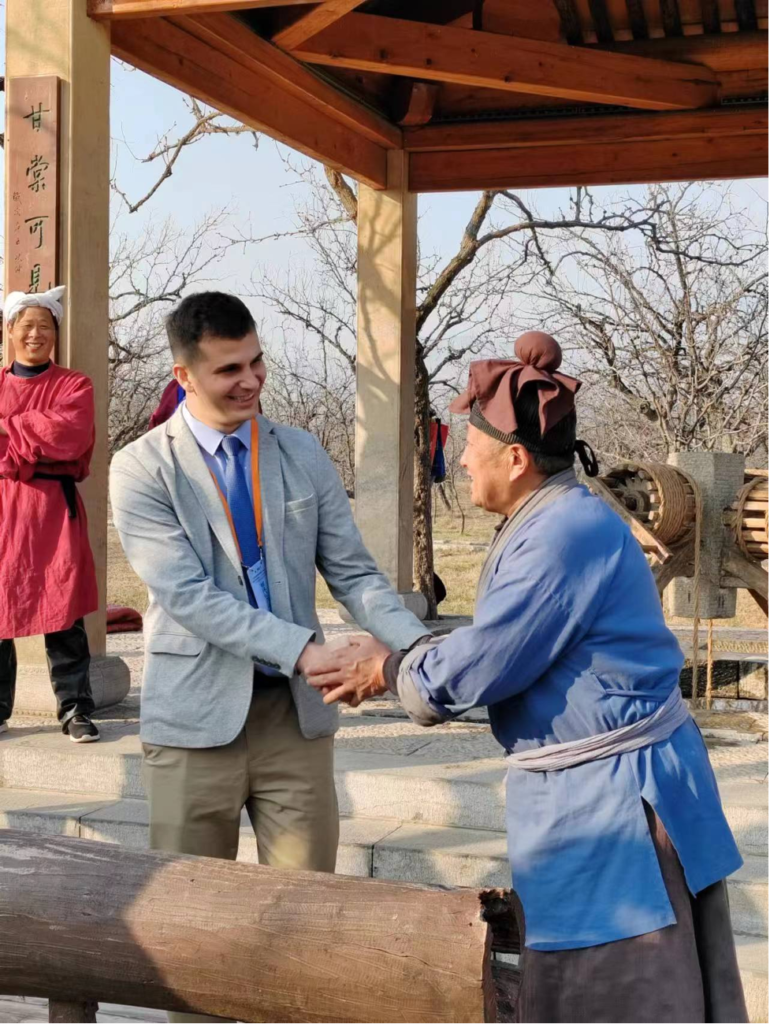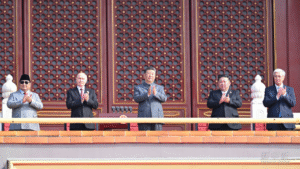In this first article, we share our observations of Yuncheng, a city rich in history and natural beauty, which we had the opportunity to explore during a trip organized by China’s largest media organization, China International Radio (CRI Online), from November 13 to 17.

Yuncheng, located in the southern part of Shanxi Province, southwest of Beijing, is historically recognized as one of the oldest birthplaces of the Chinese nation. The city is easily accessible from all regions of China and is notable for being the only city established to develop the salt industry in the country. The region’s historical position, along with the contributions of the Yellow River and other natural resources to its economy, has undoubtedly played a major role in its cultural and social development. In this article, we will share our observations of the historical and natural sites we visited in three districts during the trip.

Jishan National Jujube Park
This area, located in Yuncheng’s Jishan District, was declared a “National Jujube Park” by China’s State Forestry Administration in 2017. It holds the distinction of being the only national flower and forest park in Shanxi Province. During our visit to Yuncheng, we witnessed firsthand the importance of the jujube fruit, a type of date, to the region’s social life and history. The park itself is home to over 17,000 jujube trees, some of which are around 1,000 years old, with an average age of 500 years. These trees are considered some of China’s oldest and most valuable in this area.
The “Jishan Jujube Museum” is the only theme park in China dedicated to showcasing jujube culture. According to officials, the 2020 Chinese Farmers’ Harvest Festival, supported by the Jishan District Government, lasted 93 days. This festival highlights the significant role that jujube farming and culture play in the region’s social life. The “harvest dance” performed by local villagers at the entrance, reflecting the process of gathering jujubes from the trees to the table, offers visitors a deep understanding of this cultural tradition.

Jiangzhou Scenic Area
Located in the Xinjiang District of Yuncheng, the Jiangzhou Scenic Area includes the “Chengchuang Temple,” the “Jiangzhou Lobby” (previously a government office), and a garden bearing the same name. With over 1,000 years of history, this area was declared a “tourist attraction” by the national government in 2021. Upon entering the archaeological excavation site, visitors are greeted by a 1,000-year-old handprint believed to belong to a worker who contributed to the construction of the building.
The site features a unique architectural trio known as the “Bell Tower, Drum Tower, and Music Tower,” which is rarely seen in traditional Chinese architecture. The Music Tower includes a two-story wooden structure. According to ancient Chinese records, shadow plays similar to Turkey’s “Karagöz-Hacivat” were performed on the upper floor, while traditional Chinese opera was staged on the lower floor. The public, seated on the hillside to the north, enjoyed these operas as a regular form of entertainment.
The “Drum Tower,” established around the 1300s AD, has three floors and five rooms, with drum-like columns around it that give the tower its name. The “Bell Tower,” over 1,000 years old, houses one of the most significant relics of this site—a massive iron bell, believed to have been cast in the 1100s AD, considered the oldest and heaviest bell in China.
The “Jiangzhou Lobby” was built during the Tang Dynasty and sits on a 1.5-acre plot of land. The current hall, constructed in the style of the Yuan Dynasty during the reign of Kublai Khan, served as the administrative office for local governors throughout past dynasties. One striking feature of the lobby is the “kneeling fish stone” located in front of the governor’s desk. When we asked why it’s called that, we were told that in ancient China, the state symbolized “water” and the people “fish.” Since the fish rely on water to live, they must kneel before it, which is why the stone bears this name. Behind the lobby is a garden, built about 1,500 years ago, recognized as the only official garden from the Sui Dynasty to have survived to the present day.

Stork Tower
Located on the banks of the Yellow River, famously referenced in Nazım Hikmet’s poem, “Doctor, if half my heart is here, the other half is in China, among the army marching towards the Yellow River,” the “Stork Tower” is one of China’s four most famous historical and cultural structures. Originally constructed as a military watchtower during the Northern Zhou Dynasty about 1,500 years ago, the tower gained prominence due to the Tang Dynasty poet Wang Zhihuan’s poem “Climbing the Stork Tower.” Its name comes from the storks that frequently built nests atop it.
The main structure of the Stork Tower sits on a large platform measuring 83 meters by 72 meters, standing 57.4 meters high. The tower has six floors, with spiral staircases in the eastern and western corners. Reflecting the ancient Puzhou culture, the tower embodies many elements of Chinese civilization, particularly from the Tang Dynasty. Each floor of this unique tower is dedicated to a different theme, narrating not just the history of the region but also the broader history of China.
The Stork Tower, surrounded by the tranquil Zhongtiao Mountain and overlooking the Yellow River, is considered a key symbol of Chinese civilization’s origins. It reflects the belief of the local people that the key-shaped mountain unlocks the birthplace of the Chinese nation. The tower’s various themes—such as Music, Ancient China, Eternal Civilization, and Unique Performances—make it easier to understand ancient Chinese history.
For instance, in 1926, scientists from Tsinghua University discovered over 60 boxes of silkworm cocoons during excavations in this area, dating the history of silk farming back 6,000 years. Moreover, China, the first country to melt iron, initially utilized casting technology here. While Mediterranean countries used cast iron in the 1300s AD, the people of this region had been using this technology consciously and systematically about 1,900 years earlier, around 600 BC.
In summary, the Stork Tower is a shining gem in the Yellow River Basin, a symbol of Chinese culture and national spirit. The cultural and historical elements it embodies offer us a glimpse into the vastness of ancient Chinese culture and history, reminding us that there is still much to be learned from this rich heritage.





